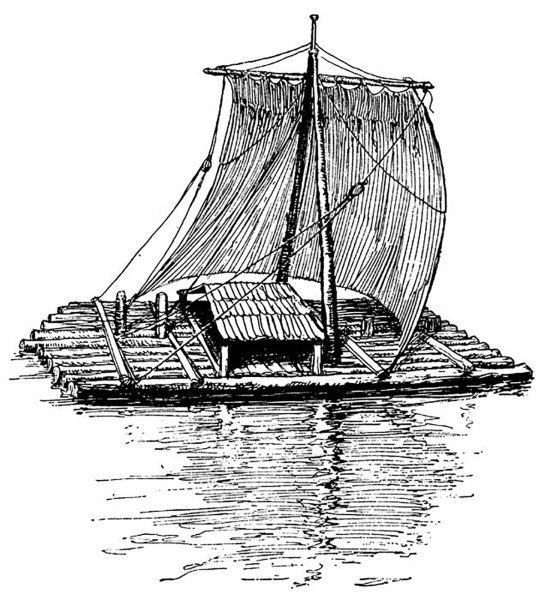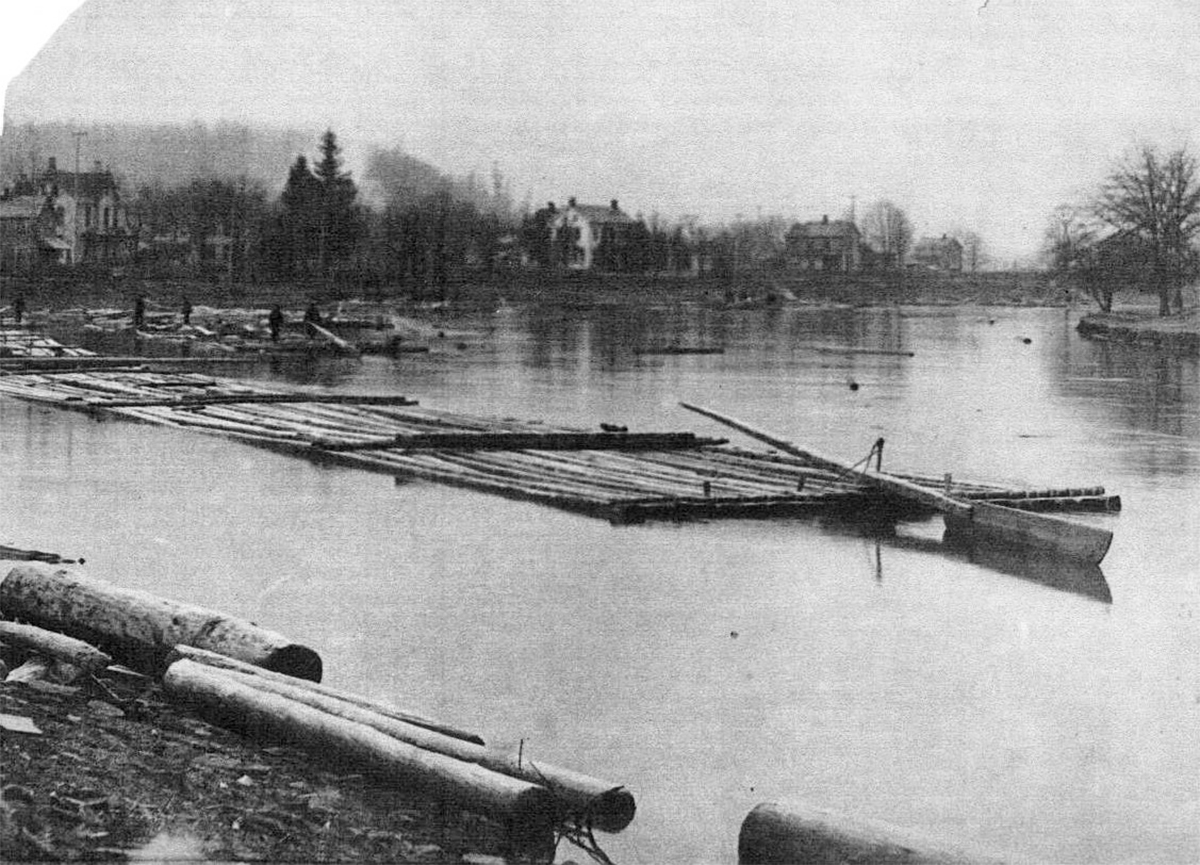This is the fourteenth in a Series of Reminiscences by E. R. Brown. Brown was born in Pulaski County on August 9, 1845. His writings are abstracted from the Pulaski County Democrat on microfilm housed in the Pulaski County Public Library, Winamac, Indiana. Find links to earlier entries at the end of this article.
Published in Pulaski County Democrat, May 18, 1922
 A gentleman attending the bankers’ convention at the Bassoka clubhouse last June, asked me about early commerce on the Tippecanoe, and he had been told that the large sums of gold and silver once taken in at the Winamac land office had been sent away in boats. My reply was that I did not know about it personally but was sure that statement was erroneous. If boats were ever used for that purpose, or for transporting much of anything else on the river, I had never heard of it. It was once common along many rivers, some smaller than the Tippecanoe, to use flat boats to take produce to distant markets. In those cases, the boat, as well as the cargo was sold so that the stream was used in that limited way in one direction only. Yet, I would say that even that distinction was denied our favorite stream.
A gentleman attending the bankers’ convention at the Bassoka clubhouse last June, asked me about early commerce on the Tippecanoe, and he had been told that the large sums of gold and silver once taken in at the Winamac land office had been sent away in boats. My reply was that I did not know about it personally but was sure that statement was erroneous. If boats were ever used for that purpose, or for transporting much of anything else on the river, I had never heard of it. It was once common along many rivers, some smaller than the Tippecanoe, to use flat boats to take produce to distant markets. In those cases, the boat, as well as the cargo was sold so that the stream was used in that limited way in one direction only. Yet, I would say that even that distinction was denied our favorite stream.
Of course, there was considerable early travel downstream in small boats. Seeing that the portage was so short, first from St. Joe to Yellow River and from that to the Tippecanoe, it would not be a far cry to conclude that devoted missionaries and adventurous explorers used our river to get from Lake Michigan to the lower Wabash and the Ohio almost 200 years ago. When on the river I sometimes think of the bateaux of those advance agents of civilization gliding quietly down its placid current, turning the long irregular loop in front of where more than 100 years later Winamac was destined to be located. Maps made in France at that time, which was long ago for sure, are said to show the course of the Tippecanoe with striking correctness. That could not mean less than that it had been traveled and notes made of directions.
It is still true that if a person wanted to go from some point up the river to Lafayette or to some point on the lower Wabash, with the water at a fair stage, he could make the trip in a small boat with no great loss of time. Before the days of railroads, it was very common for people to do that, the boats not always being paid for. From the large number of good boats I now see along the river, few of them locked, I would think this last feature is no longer true. Not in the earliest period, but long ago, it was frequently true when people wanted to move to points south, they built large skiffs or house boats and loading their families and effects in them, pushed off downstream. But to go upstream was different. A few small boats were early seen that way, often poled by two husky men, sometimes having a sail to aid in propelling them. But they were lightly loaded, and their progress was slow and laborious. If their occupants said they were going far, those best acquainted with the riverbed had doubts about them getting there.

However, the Tippecanoe was extensively used early in the logging and lumber industry. In that way, it served a very useful purpose for many years. The extensive supply of timber farther up, particularly of poplar, walnut and ash, was the reason for this. Both in the way of floating logs to mills farther down and of lumber sawed by mills up the river, it became quite a highway of commerce when the water was at proper stages. The logs were always driven singly by men in boats, equipped with facilities for loosening them from obstructions and keeping them in the current. Wagons traveling overland generally furnished the men with meals and camping facilities. The lumber was formed into long, narrow rafts, provided with large oars at the ends, by which they could be guided and with a shank on them in which the men ate and slept. These rafts, by the way, which were so familiar to me in my childhood, are the best illustrations I would know of as to control and direction, and therefore the responsibility, which men have over their own lives. Views upon the subject are widely divergent, ranging from a conception of Divine Providence which amounts to fatalish, to an exaggeration of the human element which entirely eliminates God. The better way, as revealed in our Christian religion, it has long seemed to me is quite clearly shown in connection with these early rafts, perhaps in a homely way. The men were, indeed, in a strong current but that was the very reason for their being where they were, and under proper conditions the stronger the current the better. To turn and go the other way or to get out of the current and still attain the ends in view, were alike impossible. Their sole concern and responsibility was, therefore, to be on the constant lookout and use such means as they had in order that they might have the best advantages of the current and at no time abuse that advantage by recklessness. If there were eddies, counter currents or obstacles in the way, which might stop, turn them aside or wreck them, they had reasonable means by which they might avoid these and finally reach their landing safely and with credit.
These early rafts could be stopped at any point. Many were stopped at the nearest point to some particular farm, the lumber being used to build a house or barn. For several years previous to the building of the mill at Pulaski a small lumber yard was maintained on the riverbank just above where the dam was afterwards built on the west side of the river. Both the running of logs and rafting of limber continued until after railroads came to Monticello in 1859 and to Winamac in 1861.
Links to Earlier Articles
- Part one (Common Inconveniences) October 2018 newsletter.
- Part two (Land) June 2019 newsletter.
- Part three (Trees & Timber) November 2019 newsletter.
- Part four (The River) February 2020 newsletter.
Later editions are carried as separate posts.
- Part five (Public Roads)
- Part six (Schools)
- Part seven (Markets & Trading Points)
- Part eight (It’s Mills)
- Part nine (Wild Game)
- Part ten (Feathered Wild Game)
- Part eleven (Animal Pests & Birds of Prey)
- Part twelve (Fishing in the Early Days)
- Part thirteen (Wild Fruit)